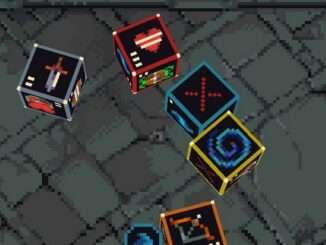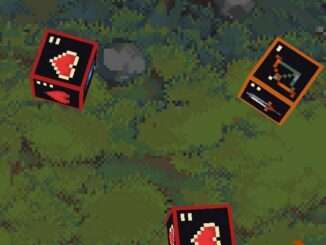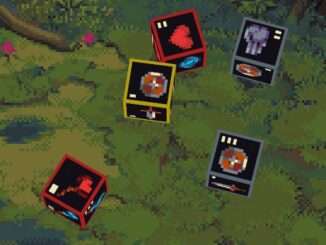
Art of the Fight
By Nirino
This is a guide about Slice & Dice. This guide is designed to be applicable to every fight in Slice & Dice.
Fights are when you have the most agency in this game. Every turn you are given 2 opportunities to reroll – this means every turn alone there are 10 reroll decisions to be made, plus another 5 on knowing how to direct your attacks/defends. Knowing HOW to fight is a big factor in getting far in this game.
Flow of the Fight
A fight typically has 2 different phases – Kill-or-be-killed phase, or the sustained heal phase.
If enemy damage is less than or equal than your healing+block, then it’s a sustained heal phase.
Slime Queen and Lich were THE sustain heal fight in v1. They don’t really do damage, but are tanky. Prepare for the long fight.

Because you can win as long as you focus on full blocking and keeping everyone alive, while your small 1-2 damage you roll is enough to kill off the enemy. You can’t do the same on kill-or-be-killed phase, hence the name.
Kill-or-be-killed phase has a lot of different mini-objectives, in the order of priority:
- Win the fight: No point prioritizing saving heroes if it won’t lead you to win the fight. In most cases saving heroes will, but keep an eye of when you shouldn’t
- Keep heroes alive: More heroes mean you get more actions to kill enemies/block attacks. You also have more damage “sponges” and reduced variance on your high/lowrolls
Having heroes on verge of dying gives you a chance to fight back, rather than if they are dead

- Quickly execute priority targets: Killing enemies serves as “block” for this turn, and incoming turns. If there are multiple enemies, figure out which one deals the most damage or most likely to kill your heroes.
- Do sustained damage on big enemies: If you can’t kill any other small enemies, try to deal as much damage as possible while healing/sustaining through their damage. You have until your hps run out to kill the enemy
Troll is the classic Kill-of-be-killed enemy. You want some heroes use their best specialized dices – orange/yellow deal damage while red partially healing through its damage

Most fights typically start on a kill-or-be-killed phase. That is why it is important to have damage source heroes, especially those that can kill enemies. Heroes that deal spread-out inefficient damage like Whirl and Ranger should be cautiously picked because they are bad at killing and you take more damage from not killing enemies faster.
When you kill enough enemies, the phase may change from Kill-or-be-killed phase to the sustained heal phase.
Lich is a fight that transitions a lot. Kill all the bones asap, then take it easy* without bones.

At this transition, you can prioritize more healing to keep everyone alive, instead of dealing damage. Likewise, enemy summons or poison can transition the fights toward the Kill-or-be-killed phase. If you can’t kill enemy summons fast enough, then you are NOT in the sustained heal phase (i.e. vs Basalt without weaken, or vs Tarantus).
There is a third less common flow a fight can go, which is Survival. The condition for this state is if the enemy will die in a number of turns, but they deal damage more than what you can heal and block. This is characterized by enemy having poison or in-build Pain (i.e. Fanatic and Gong). Simply enough, the strategy of this phase is to survive. Focus on minimizing hero eliminations – while time is your ally, your low hp is not.
How to decide which enemies to target, and how to keep your heroes alive will be the topic of the next section about Thresholds.
Thresholds
Thresholds is a consequence of hero’s actions triggering first before the enemy’s. If you kill a 4hp rat, you prevent 2 or 3 incoming damage. If you block 2 to just barely save a hero from dying, you prevent losing that dice for next turn. This resulted in having very specific breakpoints you want to target for each turn when you roll and keep your dice.
In the 5 rats image example beside, there are a few thresholds visible:
- First 4 damage dealt kills a rat and prevents 3 incoming damage. This incidentally saves a hero too.
- If you somehow can deal *two* 4 damage, you can kill 2 rats and prevent another 3 incoming damage, which incidentally saves another hero
- Block 1 is enough to save Acolyte or Adept for one turn. Block 2 can save any hero for the turn.
- 2 mana can be used to cast restore, saving both Acolyte and Adept at the same time

There are additional reasons for the existence of thresholds other than rescuing heroes and eliminations:
- Expensive-costing spells like Vampire’s Infuse need 3 mana for casting
- Enemy with immunities/weakness, like Zombie’s 4 damage threshold*, v1 Triwitches/v2 Ghost’s 4 damage immunity pip, Bandit’s overkill flee mechanic.
Not all zombies are built the same

The fact that you prevent incoming damage by killing enemies is why if you shouldn’t spread out damage, unless you are dealing an obscene amount of it (i.e. Druid/Artificer spells).
Hitting these thresholds (or not) is how runs make or break. Not hitting enough of these thresholds is called the lowroll.
The Lowroll


In most playable game modes (excluding Brutal/Hell/Loot/deep Cursed runs), you don’t get killed by the highrolls, but by the lowrolls. Let’s say every fight has a 1% chance of losing you the game due to one bad roll.
Over 20 floors, this actually means you have only 81.8% chance to win! In reality, many people have huge winstreaks and near-perfect win rates on Normal Classic (and Hard Classic in v1) difficulty – meaning that you need a really really REALLY bad lowroll to win. On the order of 0.1% aka 1 in 1000 chance, or worse than that. In practice, this means getting blanks two turns in a row.

On v1 Standard Unfair, the highest recorded winrate was around 55-60%. Applying the same logic as above, this means that on average there was 3.0 to 3.5% of losing every floor on average*. In practice, there were some floors being far more dangerous than others (i.e. first two floors*, floor 4 boss, floor 8 boss, goblins, dragon), and other floors being relatively easier.
So how does all of the above apply to our rerolling/fight strategy?
Keep Mediocre Rolls
As long as your rolls pass over enough thresholds (i.e. kill only one enemy but protect all heroes), you will have enough chances later to get a good roll and stomp the fight.
The lowroll theory also explains why fewer rerolls is a dangerous curse – you don’t only deal less damage on average, but you are increasing the risk you roll poorly.
Moral of the story, gambler bad. Scoundrel bad.
Is Gambler Bad?

“Gambler bad” is a mantra I say a lot during v1. This is based on what I described about lowrolling, but also because of one key distinction – 5 damage does not win the fight instantly.
Truth is, having one v1 Dragon Egg + Sorcerer or v1 Conduit + Anvil two v2.0.2 Ritual Dagger, broken af item insanely powerful sides that just break open the fight is a key to winning a lot of this game, because you have rerolls to actively look for them. These rolls present a highroll so insane they can nullify a lowroll turn you might’ve had.


So no. Gambler is not always all bad. I sure wish it does more than 5 damage though.





Be the first to comment